- education -
The PV Academy
The PV Academy is an educational format which will give a deep insight into selected PV research & development topics and supports the global PV community with the mission:
- to educate about the fundamentals of different PV technologies
- to facilitate newcomers in the field to understand and contribute to PV research as well as follow talks at PV specialist conferences
- to summarize and contextualize the latest developments in PV research
- to give graduates and educators the opportunity to refresh and update their knowledge

The additional event took place
Sunday 25th September 2022
onsite in the
Museo Nazionale Scienza e Tecnologia Leonardo da Vinci in Milan
Sala Biancamano
Entrance: Via Olona 6/bis
Just before the opening of the 8th World Conference on Photovoltaic Energy Conversion.
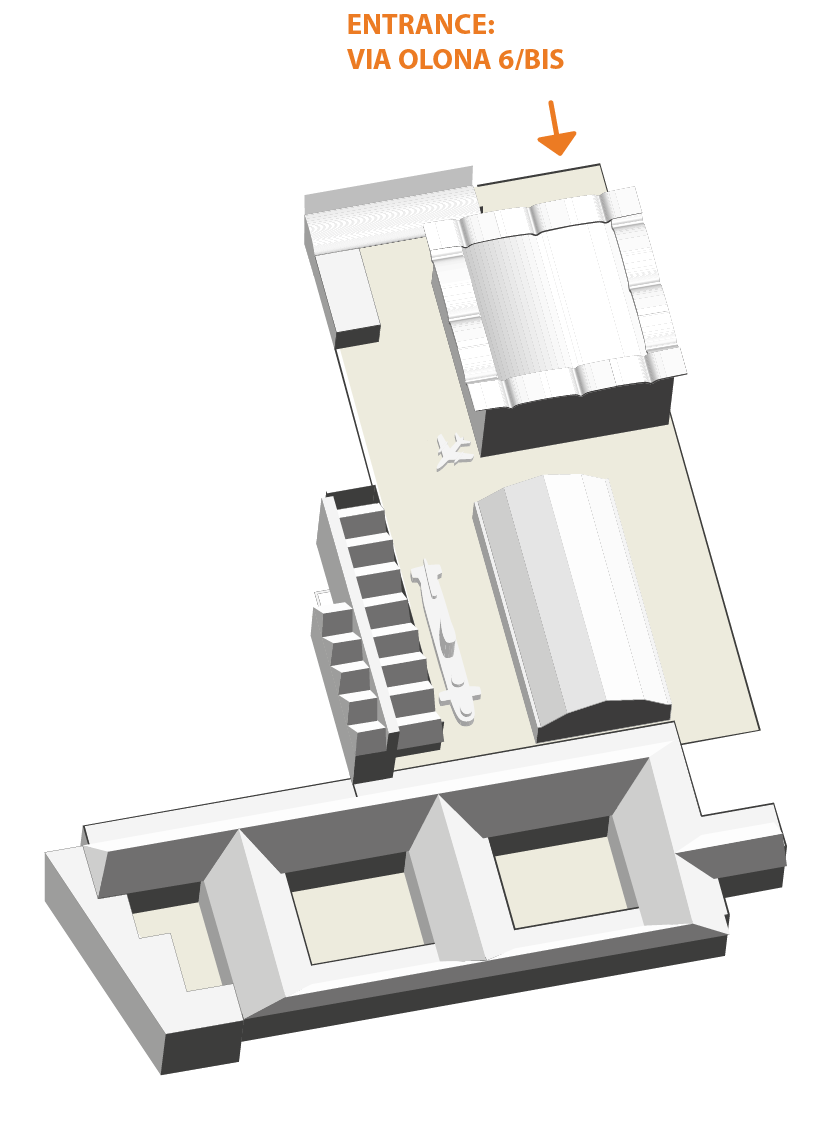
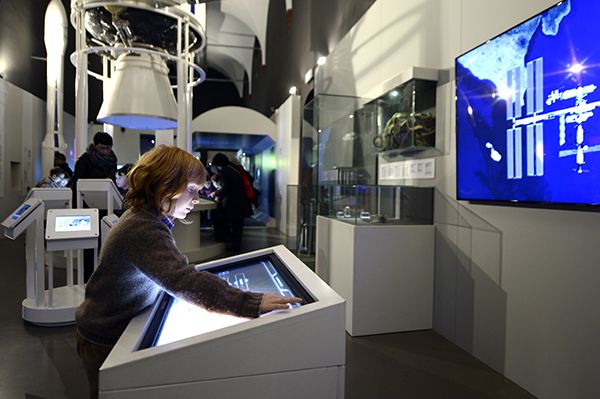
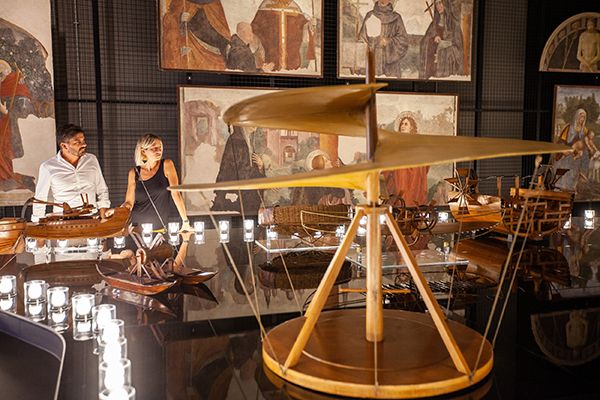
Programme
Some of the most recognized and experienced scientists in the field gave four top level lectures:
8:30 - 10:30 Silicon Solar cells: Past and Future
Silicon solar cells are the backbone of the photovoltaic industry with a rich history. Cell efficiencies up to 26.7% have been reached, close to the fundamental Auger limit for this material. But the industrial deployment came with the requirement of reaching extremely low manufacturing costs which influenced the most successful cell structures on the market. But efficiency stays a key objective of research and industrial deployment. This lecture class embarks deeply into the field from history to present challenges and future ideas.

Dr. Pierre Verlinden, Amrock
Dr. Pierre J. Verlinden is Managing Director of AMROCK, a PV technology consulting company, and Adjunct Professor at the University of New South Wales, Sydney, Australia, and at Sun Yat-Sen University, Guangzhou, China. Dr Verlinden has been working in the field of photovoltaics for more than 40 years and has published over 200 technical papers and contributed to a number of books. From 2012 to 2018, Dr Verlinden served as Chief Scientist, Vice-President and Vice-Chair of the State Key Laboratory of PV Science and Technology at Trina Solar, China, one of the world’s largest PV manufacturers. Previously, he has managed the R&D department or served as Chief Scientist in several PV companies in USA and Australia, including SunPower, Origin Energy and Solar Systems. He is also an Independent Director of several companies involved in photovoltaic technology development, including Oxford PV and BT Imaging. Dr Verlinden is the recipient of the 2016 William Cherry Award, awarded by the Institute of Electrical and Electronic Engineers (IEEE), and the 2019 Becquerel Prize, for his dedication over the past three decades at the forefront of PV technology and commercialization, leading technology advances including the interdigitated back contact cell, silicon and multijunction III-V CPV cells, and his overall leadership of key R&D organizations. Dr Verlinden is also recipient of the 2017 Chinese Government Friendship Award, the highest award given by China to foreigners
Dr. Pierre Verlinden/Amrock
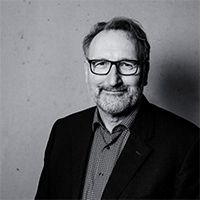
Prof. Stefan Glunz, Fraunhofer ISE
Prof. Stefan W. Glunz received the Ph.D. degree from the University of Freiburg, Freiburg, Germany, in 1995. He is professor for Photovoltaic Energy Conversion at the Albert-Ludwigs-University in Freiburg and the director of the division “Photovoltaics –Research” at Fraunhofer Institute for Solar Energy Systems, Freiburg, Germany. The research focus of the division includes the development and characterization of high-efficiency crystalline silicon, III-V, organic and perovskite solar cells.
Prof. Dr. Glunz is the author/coauthor of more than 200 journal and 300 conference papers and founding editor of the IEEE Journal of Photovoltaics. He is a scientific committee member for several conferences and workshops in the field of photovoltaics and has initiated an international conference on crystalline silicon photovoltaics (SiliconPV). In 2008, he received the Eni Award for the promotion of science and technology in the field of renewable energies and in 2014 the Becquerel Award for Outstanding Merits in Photovoltaics.
Prof. Stefan Glunz/ Fraunhofer ISE
The Crystalline Silicon PV technology has a very long history, from the first silicon cells (a few percent efficient) at Bell Labs in 1954, to a current world record of 26.7% for a single junction silicon solar cell. The evolution of silicon cell design, from a simple p-n junction to a more sophisticated solar cell with passivated front and rear surfaces and passivating contacts, already well predicted in the 1970’s to 1990’s, have taken years of R&D and industrial experiments to bring more efficient cell designs to cost-effective commercialization. Thanks to multiple innovations and step improvements brought by cost-conscientious industrialization, efficiencies of solar cells in large volume production have reached levels >23%, unexpected, even ten years ago.
The tutorial will also show how Auger recombination is limiting the single-junction silicon cell efficiency to about 29.4% and how we can approach this efficiency limit in practical solar cells with existing or future cell designs. The possible future improvements in efficiency with n-type or p-type devices, with front or rear junction, will be studied. Such optimized silicon solar cells are ideally suited as bottom cells for tandem solar cells, allowing to go beyond the 29.4% efficiency limit.
We will also review the challenges to ramp up the annual production to several TW per year. The PV industry is now facing an additional challenge. After focusing mainly on efficiency, cost and reliability, the industry must make sure that the technologies in line for multi-Terawatt of annual production are sustainable in terms of materials used in their fabrication and the recycling of the finish products.
11:00 – 13:00 PV and Architecture
The deployment of photovoltaic modules and systems will increase massively in coming decades as buildings will transform into energy producing envelopes for our businesses and homes. There is a need to harmonize with industrial manufacturing routines and international standards as well as the play of design and architecture which shapes our cities. This tutorial shows best practice examples, discusses challenges and shares a view into the future of energy producing cities.

Prof. Angèle Reinders, TU Eindhoven
Prof. Dr. Angèle Reinders is a full professor of 'Design of Sustainable Energy Systems' at the Department of Mechanical Engineering in Eindhoven University of Technology (TU/e). In her research she focusses on the integration of solar energy technologies in buildings and mobility by means of simulation, prototyping and testing. A strong interest exists in designs that enhance user acceptance and reduce environmental impact. Angèle Reinders studied experimental physics at Utrecht University, where she also received her doctoral degree in chemistry. Next she developed herself in Industrial Design Engineering. Besides TU/e’s professorship, she is an Associate Professor at University of Twente and she was a full professor in Energy Efficient Design at TU Delft. In the past she also worked at Fraunhofer Institute of Solar Energy, World Bank, ENEA in Naples and Center of Urban Energy in Toronto. She is known for her books “Designing with Photovoltaics” (2020), “The Power of Design” and “Photovoltaic Solar Energy From Fundamentals to Applications”. In 2010 she co-founded the Journal of Photovoltaics for and she chaired COST Action PEARL PV, see https://www.pearlpv-cost.eu/ Also she initiated many projects and has a strong publication record.
Prof. Angèle Reinders/TU Eindhoven
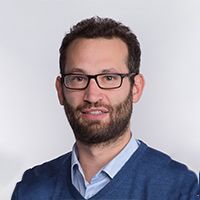
Prof. Francesco Frontini, SUPSI
Prof. Dr. Francesco Frontini is the head of the Building Sector and of the Swiss BIPV competence Center at the SUPSI in Switzerland. He graduated in Building Engineering and Architecture from Politecnico di Milano. In 2009 he got a PhD in Building Engineering where he developed, together with different manufacturers, a new multifunctional BIPV façade for solar and glare control. He worked as post-doc researcher in the Solar façades group at Fraunhofer ISE (in Germany), where he gathered extensive experience in Building simulation and in BIPV solutions. Research activity are always supported by experimental works on the design of actual buildings and solar envelops. Prof. Frontini is member of several standardization bodies and co-Manager of the IEA PVPS Task 15 aiming to accelerate the penetration of BIPV products in the global market of renewables. He is author of different publications in the field of Energy in buildings, Daylighting and Building Integrated Photovoltaic system and participates in several European projects.
Prof. Francesco Frontini/SUPSI
In the past decade photovoltaics (PV) has become a mature sustainable energy technology essential for the energy transition. Within these rapid developments Building Integrated Photovoltaic (BIPV) is consolidating as an interesting market segment which brings along new perspectives on:
- energy generation by PV systems matching the energy demand in the built environment for various uses,
- BIPV as part of the architecture language,
- design features offered by PV and glass technologies: transparency, coloring, form giving and multi-functionality,
- standards for photovoltaic systems and buildings to guarantee the right reliability,
- BIPV simulation towards zero energy balance and autarchy of buildings or city neighborhoods,
- design engineering and architectural context while integrating technical, financial, organizational and aesthetic aspects in BIPV projects.
All these aspects will be explored in this tutorial, which will be set up as a dynamic class with interaction among the students and the lecturers. The class will be supported by the exploration of real case studies co-developed by the lecturer’s teams, interactive simulations using innovative tools and approaches, visual models and prototypes in order to provide participants with the necessary knowledge to consolidate a culture of integrated design and sustainable construction, with particular attention to the integration of photovoltaic solar systems.
14:00 - 16:00 Tandem Solar Cells
Tandem solar cells have been the home of III-V compound semiconductor devices for many decades used to power space satellites and concentrating PV systems. These solar cells reach nearly 40 % efficiency without concentration and 47% under concentration, stacking up to 6 subcells on top of each other. More recently perovskites are entering this field with performances close to 30% for tandems with Silicon and this offers a path to lower cost but still high efficiency tandem cells for a wide range of terrestrial applications. The tutorial shares insights from the fundamentals of III-V tandem and perovskite based tandem solar cells as well as the related industrialisation challenges.

Dr. Ryan France, NREL
Dr. Ryan France is a senior scientist in the high-efficiency crystalline photovoltaics group at NREL, where he has researched III-V materials and multijunction solar cells for 15 years. He has developed high-performance metamorphic III-V material, and designed record efficiency inverted metamorphic multijunction devices with two to six junctions. He earned a bachelor's degree from Washington University in St. Louis, a master’s degree from Boston University where he researched III-nitride LEDs, and a doctorate in materials science from the Colorado School of Mines while researching III-V materials at NREL. He also researched single- and multi-crystalline silicon solar cells at the University of New South Wales, and investigated III-V on Si growth and devices at Fraunhofer ISE. France's current research interests include high efficiency multijunction solar cells, novel III-V materials, and III-V devices for thermophotovoltaics and space PV.
Dr. Ryan France/NREL
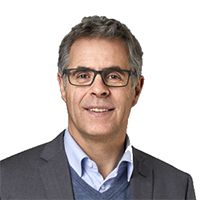
Prof. Christoph Ballif, EPFL
Prof. Christophe Ballif is director of the Photovoltaics and Thin-Film Electronics Laboratory @ EPFL and of the Sustainable Energy Center @CSEM and, which specializes in research and technology transfer along the value chain of photovoltaics and energy systems. With his teams, he has contributed to numerous innovations, products and start-up in the field of photovoltaics and energy (PV) and collaborates with close to 40 companies in Switzerland and worldwide. His current research and industrialization interests include materials and manufacturing processes for PV, high-efficiency crystalline and tandem perovskite/silicon solar cells, module technology and reliability, specialty PV products for building integration or mobility, as well as all aspects linked to storage and management of energy systems. He is (co-) author of more than 600 scientific papers and of numerous patents. In 2016, he received the Becquerel award for his contribution to the field of Photovoltaics and he is an elected member of the Swiss Academy of Engineering Sciences.
Prof. Christoph Ballif/EPFL
In the first part, this tutorial will give a general introduction to the field of multijunction solar cells for the use in terrestrial and space systems. It will start from basic theoretical considerations and explain the benefits of using several pn-junctions to convert the broad solar spectrum into electricity. Since III-Vs have historically dominated the field of multijunctions and high efficiency photovoltaics, we will review the III-V alloy system, multijunction cell components, and the various techniques that are available for growing and characterizing these highly crystalline semiconductors. Some of the latest developments in III-V research will be discussed as well as the specific requirements for the use of multijunctions in different environments will be introduced, such as high current capacity for concentrators, radiation hardness for space applications, and low cost for one-sun applications.
In the second part, new and on-going efforts toward hybrid tandems, combining cells of different material systems, will then be covered in detail. We’ll focus on silicon- and perovskite-based multijunction devices which offer the promise of similarly high conversion efficiencies as traditional tandem III-Vs, but at a fraction of the cost. We’ll review, in particular, some of the material and device properties of perovskites for use in tandem (Si/PK and PK/PK) devices, covering electronic and optical aspects. We will have a look at the advantages and disadvantages of different material and interconnection combinations (e.g. 2T, 3T, 4T). Finally we’ll discuss some of the remaining challenges towards mass commercialization, including device stability, process upscaling, and potential costs.
16:30 - 18:30 PV Systems and Storage Solutions
Solar cells and photovoltaic modules are only one part of a solar energy system and other aspects need to be considered when heading towards a high penetration of PV in our electricity network. This tutorial discusses the fundamentals of PV systems and their integration into the grid. One challenge is the fluctuating nature of solar energy which is not always matched to consumption and therefore requires storage solutions. This tutorial discusses options for short-term and seasonal storage solutions and requirements to reach a stable grid with high amount of wind and solar power.

Dr. Sarah Kurtz, UCMerced
Dr. Sarah Kurtz obtained her PhD in 1985 from Harvard University and now works at the University of California Merced after more than 30 years working at the National Renewable Energy Laboratory, in Golden, CO. She is known for her contributions to developing multijunction, GaInP/GaAs solar cells, supporting the Concentrator Photovoltaic (PV) industry, and leading efforts on PV performance and reliability. Her work has been recognized with a jointly received Dan David Prize in 2007, the Cherry Award in 2012, C3E Lifetime Achievement Award in 2016, and induction into the National Academy of Engineering in 2020. At the University of California Merced she is working both to help the university grow and to support the Energy Transition through a variety of studies, including a current study on long-duration storage.
Dr. Sarah Kurtz / UCMerced

Prof. Arno Smets, TU Delft
Prof. Dr. Arno Smets is professor in Solar Energy and Director of Extension School Education at the Delft University of Technology in the Netherlands. Smets research focuses on the development of technologies that convert solar energy in to useful forms of energy, like electricity or artificial fuels. In a bi-lateral collaboration with HyET Solar he currently works on materials, device architectures, processing, and up-scalable lab-to-fab solutions that contribute to a circular value chain of lightweight and flexible thin-film silicon PV technologies and applications. In his role as director of Extension School education he is responsible for development of life-long learning programs and portfolio’s in the engineering topics like Energy Transition, Sustainable Cities, Future Transport, Quantum Technology, Medical Technologies, Digital Societies and Engineering skills. As lecturers he developed and is offering courses in renewable energies and solar energy engineering in both on-campus BSc & MSc programs and online courses and programs to reach out to the continuing education needs of professionals. He is co-author of the academic textbook ‘Solar Energy, the physics and engineering of photovoltaic conversion technologies and systems’. Smets received his PhD in 2002 at Eindhoven University of Technology. From 2005-2009 he worked as a visiting researcher at AIST (National Institute of Advanced Industrial Science and Technology) in Tsukuba In Japan. He received the edX Award (Paris, 2016) and has been appointed as Mission Innovation Champion (Vancouver, 2019).
Prof. Arno Smets/TU Delft
This tutorial will be presented in two parts with the PV Systems part covered by Dr. Smets and the Storage Solutions covered by Dr. Kurtz.
In the first part of this tutorial we will cover the design of photovoltaic systems, such as utility scale solar farms or residential scale systems (both on and off the grid). You will learn about the function and operation of various components including inverters, batteries, DC-DC converters and their interaction with both the photovoltaic modules and the grid. The different types of inverters, methods of maximal power point tracking and the overall efficiency of energy conversion of the system will be discussed. The design principle of PV systems for different applications, A wide variety of applications of PV systems, such as off-grid, grid-connected, microgrids, will be discussed.
We will then discuss the storage solutions needed to facilitate high penetration of solar including: peaking power (< 4 hours), diurnal storage (generally 4-12 hours), cross-day storage (generally 12 – 30 hours), and seasonal storage (may be 30 – 1000 hours, including cross sector storage). The number of specified hours is the ratio of the rated energy to the rated power for the storage. Then, we will review the storage technologies available commercially and under development, including pumped hydro (the largest today), lithium-ion batteries (fastest growing today), other forms of gravity storage, compressed air storage, flow batteries, liquid air or carbon dioxide, zinc batteries, and more. Prices for lithium-ion batteries are coming down rapidly and efficiencies are high, but lifetimes and scalability are poor. The tutorial will emphasize how a collection of solutions is likely to be most effective at supporting solar- and wind-driven grids.
The PV Academy is chaired by
Chair:
Dr. Frank Dimroth/Fraunhofer ISE, Germany
Co-chairs:
Dr. Stephanie Tomasulo/NRL, USA
Prof. Takashi Minemoto/Ritsumeikan Univ., Japan

Dr. Frank Dimroth/Fraunhofer ISE, Germany
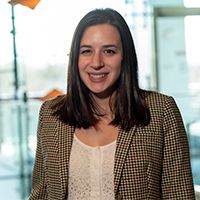
Dr. Stephanie Tomasulo/NRL, USA

Prof. Takashi Minemoto/Ritsumeikan Univ., Japan
